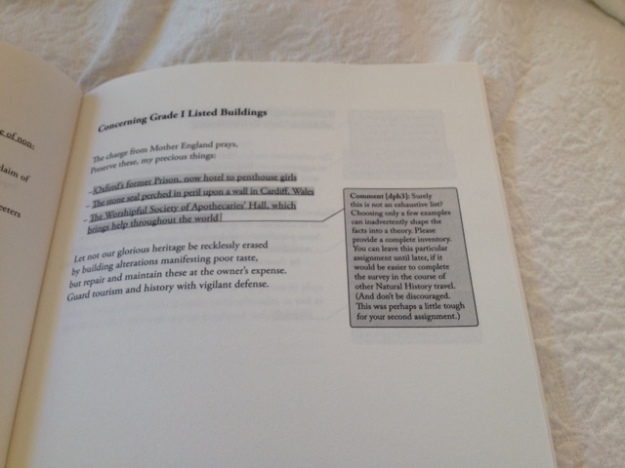


Song of the Ghost in the Machine
Roger Horrocks
Victoria University Press
2015
I confessed the day the Ockham NZ Book Award short lists came out I had not read this book as it felt too close to something I had in my head. Truth is I have finished a draft that I am leaving for a decent period of time before lifting it into something that works. The link with my starting point is tenuous. But it loomed large at the time.
Roger’s new collection comes out of walking. Walking in the physical world, walking through books, ideas, memory. Each section is prefaced by the biggest stack of quotations I have seen in ages in a poetry book. If ever! – when I think further. It means there are two different reading approaches at work here. You can go shopping within the quotes and find the ones that stick.
Like a little reading map for the reader pedestrian. The sources are eclectic. Surprising.
Then there is the poetry, and this is infused with the way age changes things. For some poets, it prompts a new alertness to the world, to what matters. Roger is absorbing the world as he walks and leaving shiny traces of it in the poems.
‘This is the world I saw.’
For some poets, age is the body changing, under threat, slower. Death seems closer. Death seems to push and nudge the poems and make itself felt. For Roger, it is there in a health scare, in the passing of loved ones.
‘The body supplies the beat’
Mostly the poems are made of long lines in thick stanzas and generate the fluency of walking. One poem, ‘One Hundred Descriptions,’ amasses aphorisms, miniature thoughts, like miniature steps.
‘a square peg in the round hole of the world’
Throughout the book, as you meander and read, sidetrack and read, loiter and read, certain things leap out at you. Just like when you walk in the physical world and see the cat asleep in the flowerpot.
‘Like shoehorn, a mind is meant to ease you/ into the world, but his makes a poor fit.’
‘My cargo is close to bursting – years of sights/ and smells, ideas and anxieties, mistakes and regrets -/ but for the moment I’m still mobile, still fossicking.’
What changes the poetry when death seems that little bit closer? With this collection it invigorates it. The ideas about self and writing and how we fit in the world. How we belong. How we make attachments. How we can use words to make shadows on the page like Plato’s cave.
In his note at the back of the book, Roger talks about poetry. In my view, when I scan the decades of NZ poetry I have read, I believe poetry does anything and everything. It busts out of compartments. Not all poetry is preoccupied with self (Roger proposes much is), yet find me a poem where traces of the poet don’t flourish like tiny signatures (ah begone Barthes!). Tiny alluring signatures that reflect bias. Bias that snags on ideas, physical views, opinions, musicality, experience, poetic choices, subject preferences.
This terrific poetry collection is like walking in the world because as you readwalk you feel invigorated, refreshed, and ready to write.
Congratulations on a well deserved spot on the short list, Roger.
VUP page
















